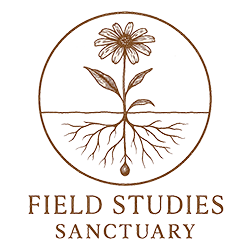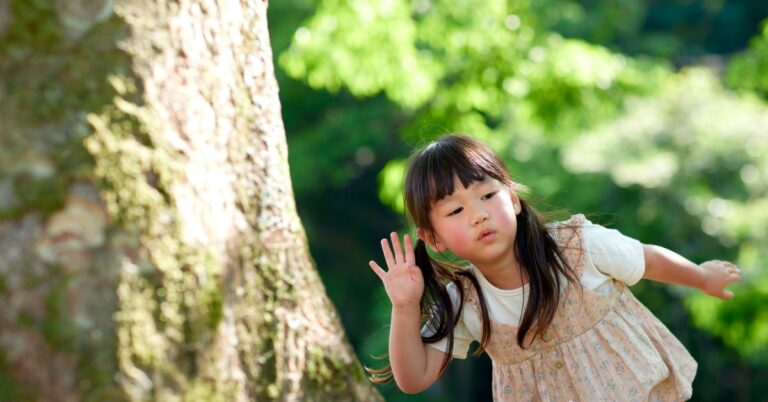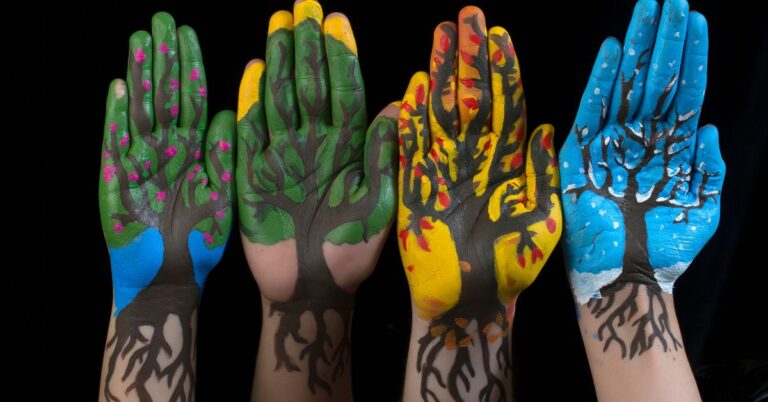Grounding in Nature: Calming the Nervous System in Uncertain Times
The ground beneath our feet is steadier than the headlines above our heads. When the world feels urgent and chaotic, grounding in nature offers a refuge. The simple act of touching soil, standing barefoot on the earth, or resting a hand on a tree can bring the body back into rhythm with the living world. These practices do more than soothe the mind — they help the nervous system settle, allowing us to meet life with steadiness instead of strain.
What It Means to Ground
Grounding, sometimes called “earthing,” is the act of connecting directly with the Earth’s surface. It might look like walking barefoot in the grass, kneeling in a garden with soil in your hands, or pressing your back against the steady trunk of a tree. It is simple and profound at once.
Science echoes what Indigenous knowledge has always carried: when we reconnect with the land, something shifts inside us. Our bodies respond to the rhythm of the Earth. We calm. We regulate. We remember belonging.
The Science of Grounding in Nature
While grounding may feel like a purely spiritual or symbolic practice, research shows it carries measurable effects.
- A review published in the Journal of Inflammation Research found that grounding can reduce chronic inflammation, balance stress hormones, and improve sleep (PMC).
- Studies on time spent in green spaces reveal that nature contact lowers blood pressure, eases anxiety, and improves cognitive function (Harvard Public Health).
- Systematic reviews of nature walks confirm that walking in natural settings significantly reduces symptoms of depression and anxiety (PMC).
These findings don’t surprise those who have felt their breath deepen while sitting by water or their heart slow under a canopy of trees. They simply affirm what the body already knows: grounding in nature is not a luxury, but medicine.
Why Grounding Matters in Times of Crisis
When the world feels uncertain, our tendency is to speed up, brace harder, or numb out. Yet those very reactions can fray the nervous system even more. Grounding interrupts this cycle. It creates a pause where we can return to presence.
For those of us carrying trauma or grief, grounding is especially important. It offers a safe tether back into the body when thoughts spiral or emotions surge. For communities navigating collective crises—ecological, social, or spiritual—grounding becomes a shared language of resilience.
This is not avoidance. It is alignment. By reconnecting with Earth, we remind ourselves that even in collapse, renewal is at work. Soil teaches this every season: compost becomes fertility, decay feeds life, stillness holds the possibility of bloom.
Grounding as Sanctuary
Grounding in nature is both a practice and a guiding metaphor for how we move through uncertain times. The Sanctuary is being built one rooted step at a time—stone by stone, seed by seed, page by page—while the wider world continues to tremble. This unfolding reminds us that stability does not come from perfect circumstances, but from returning again and again to the Earth as teacher.
This blog, the Journal, is another form of grounding. Weekly reflections are like seeds planted in the digital soil—reminders that reciprocity with nature is not an idea, but a lived rhythm. Even before the doors of a physical Sanctuary open, this practice keeps the vision alive: tending soil, tending soul, together.
Practices for This Week
Grounding does not need to be complicated. You might choose one of these practices:
- Barefoot time: Stand on soil, grass, or stone for a few minutes each day. Feel the textures beneath your feet.
- Tree connection: Place your palm on a tree trunk, noticing the stability held in its roots.
- Earthen rest: Sit or lie with your back against the ground, breathing with intention.
- Everyday grounding: Bring natural elements indoors—stone, clay, wood—and pause to touch them with awareness.
- Grounding breath: With each inhale, imagine drawing steadiness up from the soil. With each exhale, release tension into the Earth.
These gestures are simple, but their effects ripple outward. Each act of grounding steadies not only your body, but also the collective body we share.
Closing Invitation
This week, choose one grounding ritual and let it become part of your daily rhythm. Notice the way your nervous system responds. Journal with the prompt: When I ground in nature, I remember…
Carry what surfaces with you. In doing so, you join a long lineage of humans who have always looked to the Earth for steadiness, even in uncertain times.




